Fortresses, Croatia

Removed from Unnamed collection
Klis Fortress 
On the steep cliffs of the gorge between Kozjak and Mosor stands the Klis fortress, with one eye facing the sea and another facing Zagora. It was built on an extraordinary strategic location that allows military and commercial control over the whole Klis valley and the area of Salona and Split. Because of its importance, Klis was often referred to as the key to Dalmatia and the heart of the medieval Croatian kingdom.
The findings from the Krčina cave are the first traces of the settlement of the area around Klis fortress. It is ceramic pottery in which different forms are imprinted before the baking from which the name Impresso culture is derived, and it lasts from 6000 to 4500 BC on the Adriatic coast. Today we do not know much about the population of those times, but there is a possibility that there were first traces of agriculture in the Adriatic coast.
The first population of this area we can accurately identify are the Dalmatians, one of the Illyrian tribes. They inhabited the area from the river Krka to the Neretva, among others the area along the river Jadro (today’s Solinčica beneath Klis). They raised their forts on natural elevations for easier protection from possible attackers. At the foot of Klis fortress, the remains of such settlement were found, and its role was control of the passage between Kozjak and Mosor. Together with the other nearby forts, the hill below Klis controlled access to Illyrian Salona and the mouth of the river Jadro. This role will take on all of the later buildings at this location. https://www.tvrdavaklis.com/povijest-tvrdave/?lang=en
Map

Removed from Unnamed collection
Monkodonja 
The fort of Monkodonja is located about 5 km south-east of Rovinj, and was discovered in 1953 when the first excavations were carried out. Since 1997, detailed research and a partial architectural reconstruction of the site is being conducted.
The town, surrounded by walls, built with blocks of stone with the dry technique is located on a hill and its side terraces that are created with stones quarried and crushed from the hill to give space to the village. The casteliere was inhabited in the period from 2000 until 1200 BC. https://www.inforovinj.com/eng/rovinj/znamenje/monkodonja.asp
Map
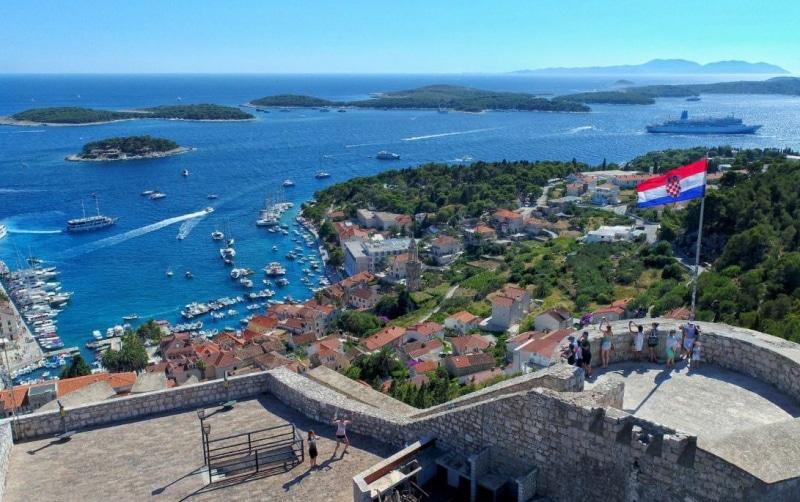
Removed from Unnamed collection
Fort Fortica 
If you walk from the square to the north, passing the main city gate or Porta di datallo (Gate of Dates) ascending the stairs through the old part of the city in which there are palaces built in the 15th and 16th centuries, through small bends that give out the aromas of Mediterranean plants, you will reach Hvar's fort Fortica or how the locals call it Španjola. It was built at the beginning of the 16th century (during the Venetian rule) and was reconstructed in 1579. Today the fort holds a collection of amphora and other exhibits from antiquity and the Middle Ages. Besides experiencing its exquisite architecture, you will experience an unforgettable panoramic view of the city of Hvar, its surroundings and the Pakleni islands. https://www.visit-hvar.com/tours/the-fort-fortica-spanjola/HV-TR-27
Map
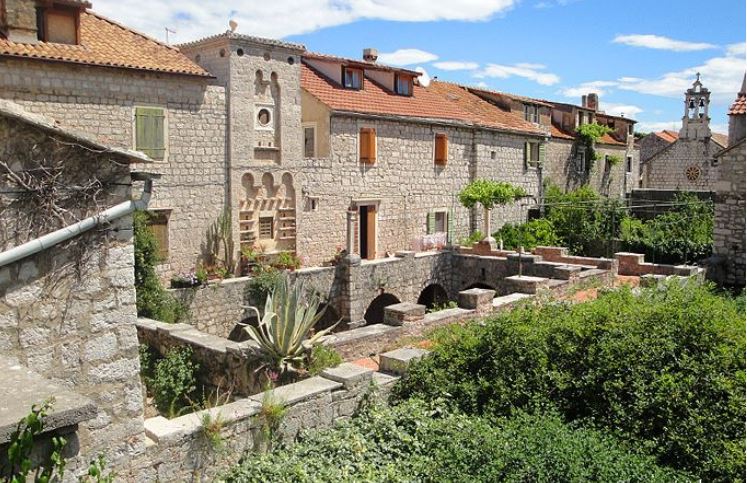
Removed from Unnamed collection
Tvrdalj 
Tvrdalj was built as a fort for defence from the Turks by the renowned poet from Hvar Petar Hektorović. It was erected by filling up the sea and one could enter it only over a bascule bridge. In the centre of Tvrdalj, Hektorović designed and built a Romanic park with a fishpond. Tvrdalj has numerous stone inscriptions, but the one saying 'Omnium Conditori' is the most significant one, since, with it, Hektorović dedicated his Tvrdalj to God, the Creator of everything. https://www.visit-hvar.com/tours/tvrdalj-stari-grad/HV-TR-24
Map
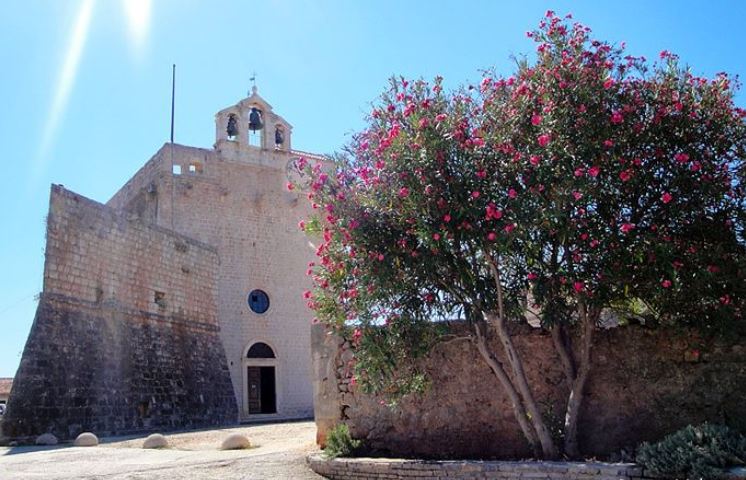
Removed from Unnamed collection
Church Fort of St. Mary 
One of the most significant monuments of the island of Hvar is definitely the Church – fort erected in 1571, after the Turkish attack on the location of an older church that originated in 1465.
The church has the shape of a fort with an observation post and a loop-hole and from its top, there is a beautiful panoramic view of the surrounding places and fields. The church preserves valuable works of Stefan Celesti ('Lady of Mount Carmel'), Antonio Sciuri ('Mary's Childbirth'), Giuseppe Alabardi ('Resurrection' and 'Placing into the tomb') Marko Rašica ('Lady of Mount Carmel') and Celestin Medović ('Homage of the Three Kings'). https://www.visit-hvar.com/tours/church-fort-of-st-mary-vrboska/HV-TR-23
Map

Removed from Unnamed collection
Michael's Fortress 
St. Michael's Fortress was built on a steep, rocky hill with a beautiful view to the numerous islands of the Šibenik archipelago and the medieval town.
Throughout turbulent history, it served as the main point of the city fortification system. Šibenik, the oldest autochthonous Croatian town on the Adriatic, was developed within its walls and first mentioned on Christmas Day of 1066 as the place where the Croatian King Petar Krešimir IV stayed. Most of the preserved ramparts and fortress bastions date from the late Middle Ages and Early Modern Age. The fortress was revitalized in 2014 and has a unique open-air summer stage. https://www.sibenik-tourism.hr/lokacije/st-michael's-fortress/4/en.html
Map
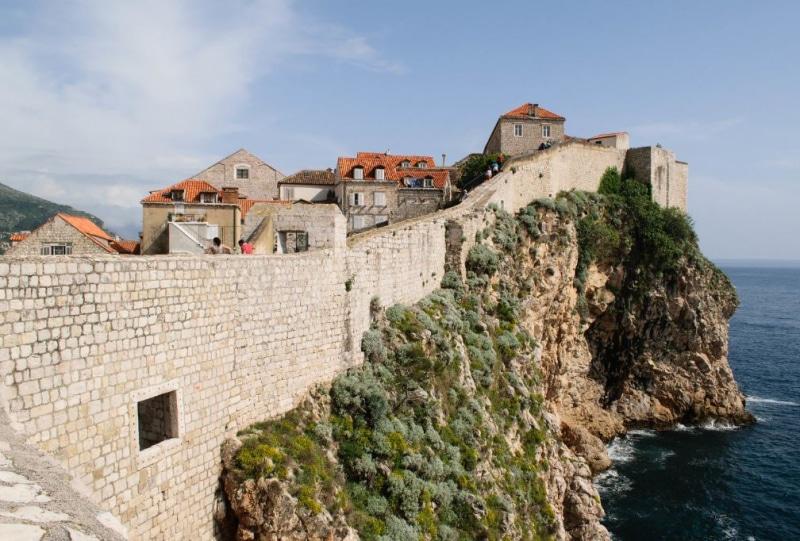
Removed from Unnamed collection
Dubrovnik Ancient City Walls 
The Walls of Dubrovnik (Croatian: Dubrovačke gradske zidine) are a series of defensive stone walls that have surrounded and protected the citizens of the afterward proclaimed maritime city-state of Dubrovnik (Ragusa), situated in southern Croatia, since the city’s founding prior to the 7th century as a Byzantium castrum on a rocky island named Laus (Ragusia or Lave). With numerous additions and modifications throughout their history, they have been considered to be amongst the great fortification systems of the Middle Ages, as they were never breached by a hostile army during this time period.[2] In 1979, the old city of Dubrovnik, which includes a substantial portion of the old walls of Dubrovnik, joined the UNESCO list of World Heritage Sites.
The oldest systems of fortifications around the town were likely wooden palisades. Today’s intact city walls, constructed mainly during the 12th–17th centuries, mostly a double line, have long been a source of pride for Dubrovnik. The walls run an uninterrupted course of approximately 1,940 metres (6,360 ft) in length, encircling most of the old city, and reach a maximum height of about 25 metres (82 ft). The bulk of the existing walls and fortifications were constructed during the 14th and 15th centuries but were continually extended and strengthened up until the 17th century. https://www.godubrovnik.guide/dubrovnikthingstodo/ancient-city-walls/
Map
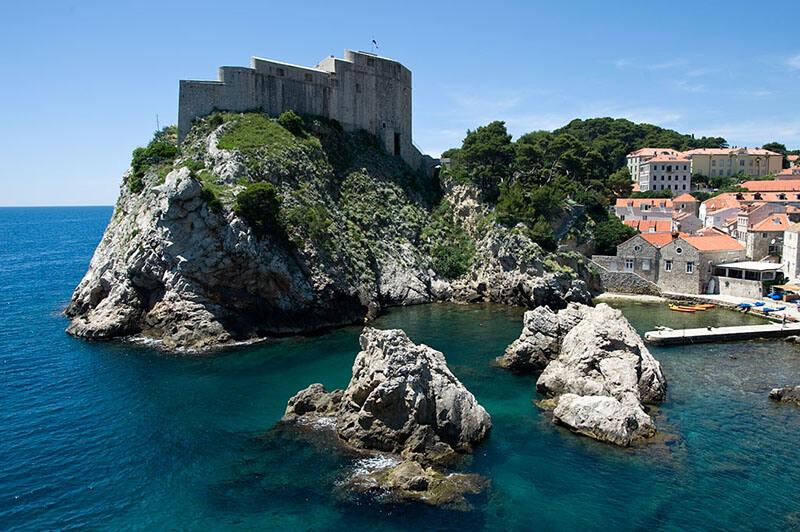
Removed from Unnamed collection
Fort Lovrijenac 
Fort Lovrijenac or St. Lawrence Fortress, often called “Dubrovnik’s Gibraltar”, is a fortress and theater located outside the western wall of the city of Dubrovnik in Croatia, 37 m above sea level. Famous for its plays and importance in resisting Venetian rule, it overshadows the two entrances to the city, from the sea and by land. Early in the 11th century the Venetians attempted to build a fort on the same spot where Fort Lovrijenac currently stands. If they had succeeded, they would have kept Dubrovnik under their power, but the people of the city beat them to it. The “Chronicles of Ragusa” reveal how the fort was built within just three months time and from then on constantly reconstructed. When the Venetian ships arrived, full of materials for the construction of the fort, they were told to return to Venice. The Croatian leg of the Red Bull Cliff Diving World Series takes place in Lovrijenac. https://www.godubrovnik.guide/dubrovnikthingstodo/fort-lovrijenac/
Map
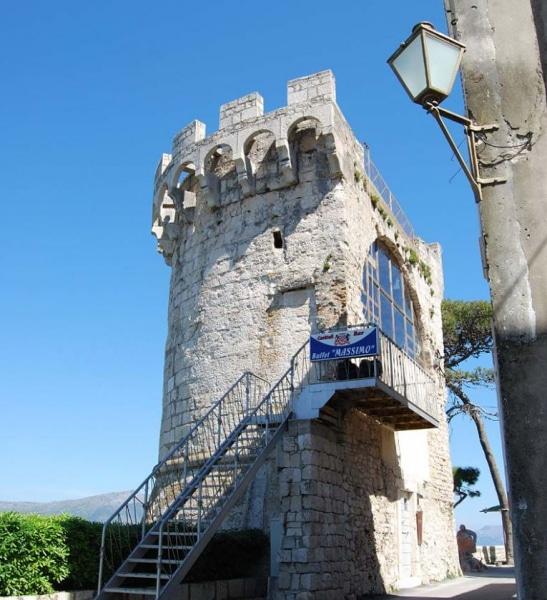
Removed from Unnamed collection
Zakerjan Tower 
Kula Zakerjan (Zakerjan tower), is also named Berim Tower. It stands on the north of Korcula Town (see map below) in the Zakerjan area. The tower was built between 1481 and 1483 under the rule of Giovanni Mocenigo who was doge of Venice from 1478 to 1485.
The tower is shaped like half-cylinder and has similar crenellation – the distinctive pattern that framed the top of the walls of this medieval tower. On the Northside of the tower, facing Peljesac Channel, there is Venetian coat of Arms of Governor Viaro and Doge Mocenigo. On the Southside, facing Korcula Town, above the arch, there is Tiepolo Coat of Arms. The tower was built by the workshop of Marko Andrijic, the local stonemason. Nowadays, Zakrjan Tower houses popular Massimo Bar that serves drinks on the top of the tower’s terrace. https://www.korculainfo.com/towers/zakerjan/
Map
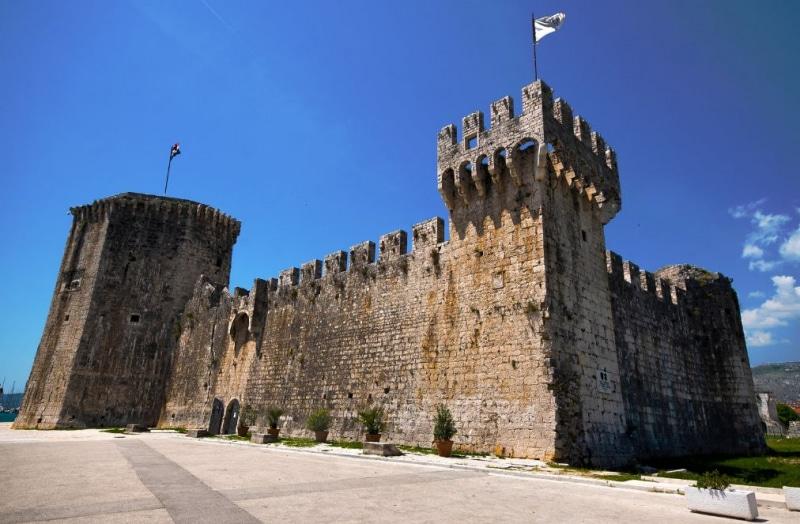
Removed from Unnamed collection
Fortress Kamerlengo 
Fortress Kamerlengo is situated at the west end of Trogir islet, built by Venetians in Xlll - XV century as a naval base for their navy forces in this part of Adriatic. It is named by town Magistrate Camerarius. Nowadays, the fortress is a multimedia centre with open-air cinema and stage for various cultural events. http://www.trogironline.com/virtual_guide/fortress_kamerlengo.html
Map

Removed from Unnamed collection
Lotrscak Tower 
Lotrščak Tower is Zagreb’s fortified tower. It was a part of the southern gate and town defences against the Turks, built in 1266.
Today, it is one of the last remaining fortifications and one of Zagreb monuments. But wait – there’s more, inside the Grič cannon fires every day exactly at noon.
It has been doing that for the last hundred years, as a commemoration of Zagreb’s victory over the Turks. It has become somewhat a tradition, as locals set their watches according to the shot.
The tower was overlooking Zagreb defences for years in the past. As a matter of fact, it got its name by the bell, lat. campana latrunculorum (thief’s bell), which rang every night before the gates closed.
Today, it is overlooking Zagreb and offers spectacular views from its top. We highly recommend it to all who can climb its narrow steps. https://www.visitzagreb.hr/zagreb/lotrscak-tower-gric-cannon/
Map

